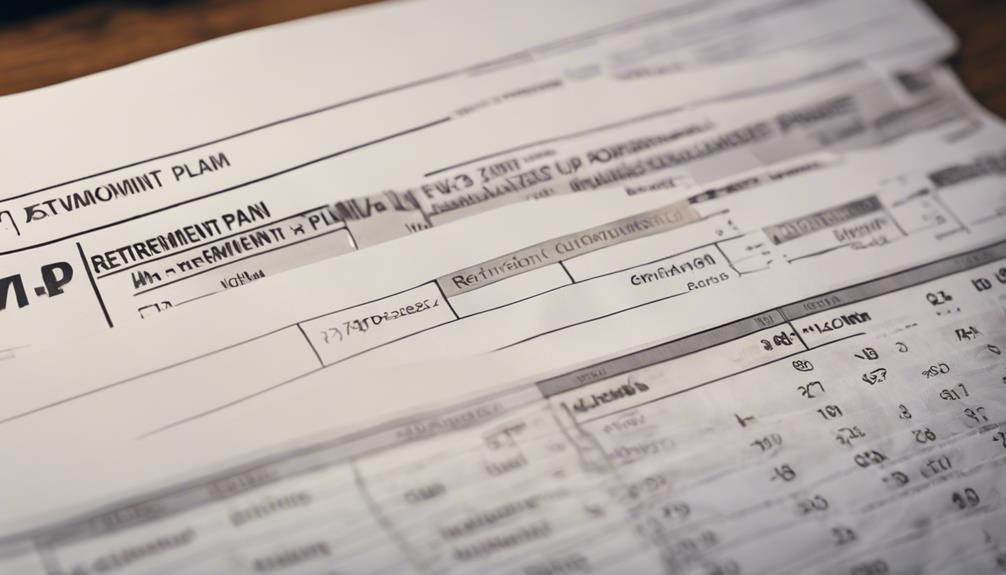To protect your physical gold positions with portfolio insurance, you can use futures contracts as a hedge. By shorting gold futures, you offset potential losses if gold prices fall, helping to preserve your investment’s value. This strategy allows you to stay exposed to gains if prices rise, while limiting downside risk. If you want to explore how this approach works in detail, there’s more to uncover below.
Key Takeaways
- Portfolio insurance can protect gold positions by using futures contracts to hedge against price declines.
- Futures enable offsetting losses in physical gold with gains in short positions during market drops.
- Dynamic strategies like CPPI adjust futures exposure based on gold price movements to maintain a protective floor.
- Purchasing put options on gold or futures provides a guaranteed minimum sale price, supplementing insurance.
- Effective implementation requires understanding of futures markets, liquidity considerations, and proper risk management techniques.

Have you ever worried about protecting your investment portfolio from sudden market drops without selling off your assets? If so, portfolio insurance might be the strategy you’re looking for. It’s a risk management technique designed to shield your investments from significant losses while allowing you to stay invested and maintain potential upside gains. Unlike traditional insurance policies, portfolio insurance isn’t an actual insurance product. Instead, it’s a method often used by institutional investors to control downside risk through dynamic trading activities.
Worried about market drops? Portfolio insurance helps protect your investments without selling assets.
The core idea behind portfolio insurance is to set a predefined minimum value, or “floor,” that your portfolio should not fall below. To achieve this, investors frequently employ futures contracts—commonly index futures—that act as hedges. When the market declines, these futures contracts gain value and offset the losses in your underlying assets, effectively preventing your portfolio from dropping below the set floor. This approach allows you to participate in market recoveries without the fear of devastating losses. Futures contracts serve as a key tool in implementing effective portfolio insurance strategies. Additionally, the use of risk management techniques can optimize the balance between protection and return.
Furthermore, understanding the market dynamics that influence these strategies can help investors better tailor their risk mitigation approaches. One popular technique within portfolio insurance is the Constant Proportion Portfolio Insurance (CPPI). This rule-based strategy automatically adjusts your asset allocations based on the current value of your portfolio. When your investments perform well, CPPI shifts more into risky assets to maximize gains. Conversely, if the market declines, the strategy moves funds into safer assets like cash or bonds, reducing exposure and limiting losses. This dynamic asset allocation enables continuous risk management without the need for constant manual intervention.
Another important aspect is that model complexity can impact how effectively portfolio insurance strategies are implemented, requiring sophisticated analysis and oversight. Options contracts, such as put options, also play a role in portfolio insurance. They can be purchased or simulated to guarantee minimum sale prices or establish a floor value for your portfolio. This provides an extra layer of protection, especially during volatile market periods, by giving you the right to sell assets at a predetermined price, regardless of market downturns.
The concept of portfolio insurance was pioneered in 1976 by Hayne Leland and Mark Rubinstein, gaining traction among institutional investors during the late 1970s and early 1980s. It became particularly relevant before the 1987 stock market crash when investors sought methods to protect portfolios without being forced to liquidate assets during downturns. While the strategy offers downside protection and helps align risk with your tolerance and investment horizon, it’s not without limitations. Costs can accumulate from frequent trading, and during extreme market events, liquidity challenges can diminish its effectiveness.
Implementing portfolio insurance requires sophisticated models or rule-based systems to continually analyze and adjust your holdings. These systems keep your portfolio aligned with your risk limits, allowing you to participate in gains while guarding against severe losses. However, it’s important to remember that no strategy is foolproof, especially in highly volatile or illiquid markets.
Frequently Asked Questions
Can Futures Perfectly Hedge Physical Gold Positions?
You might wonder if futures can perfectly hedge your physical gold. While they help reduce price risk, perfect hedges are rare because markets are unpredictable, and factors like timing, liquidity, and basis risk can cause discrepancies. Futures can greatly improve your risk management, but they won’t eliminate all exposure. It’s crucial to understand these limitations and adjust your hedge ratio accordingly for the best protection.
What Are the Costs Associated With Futures-Based Portfolio Insurance?
You face several costs with futures-based portfolio insurance. These include transaction costs from frequent trading, bid-ask spreads, exchange fees, and brokerage commissions. You also have margin requirements tying up capital, which could earn returns elsewhere. During volatile markets, slippage and market impact can increase costs further. Over-trading may erode gains, and maintaining hedges often involves ongoing adjustments that add to the overall expense, especially in stressed market conditions.
How Does Liquidity Affect Futures Used for Gold Protection?
Liquidity plays a vital role in futures used for gold protection because it allows you to buy or sell contracts quickly without impacting prices. When markets are highly liquid, you can adjust your hedges efficiently, respond swiftly to price changes, and reduce costs like bid-ask spreads. This guarantees your protective positions stay aligned with market movements, giving you reliable and cost-effective risk management during volatile times.
Are There Tax Implications When Using Futures for Hedging?
Have you considered the tax implications of using futures for hedging? When you properly identify your futures as hedging transactions, gains or losses are treated as ordinary income, matching the physical asset’s tax treatment. Without this, gains might be capital, causing mismatches. Using futures can also defer capital gains on physical gold, and Section 1256 offers favorable tax treatment. Be sure to follow IRS rules to optimize your tax outcomes.
What Are the Risks of Using Leverage in Gold Futures Hedging?
When you use leverage in gold futures hedging, you face significant risks. Small price movements can cause large gains or losses because of the borrowed funds. You might face margin calls if gold prices fall, requiring extra cash quickly. Volatility can worsen losses, and rapid market shifts may force you to liquidate positions at unfavorable prices. High leverage amplifies these risks, making your investment more vulnerable to sudden market changes.
Conclusion
As you navigate the gold market, remember that futures act like a safety net, catching you just in time. When prices dip unexpectedly, your protective strategy unfolds quietly, much like a calm lighthouse guiding ships through foggy nights. With the right tools and timing, you can confidently shield your physical gold, turning potential chaos into a peaceful harbor. In this dance of risks and rewards, your foresight becomes the steady hand that keeps your wealth secure.
Helen brings a wealth of experience in investment strategy and a deep passion for helping individuals achieve their retirement goals. With a keen understanding of market dynamics, Helen has been instrumental in shaping the vision and direction of Gold IRA Markets. She specializes in creating innovative solutions that align with our clients’ long-term investment objectives.










